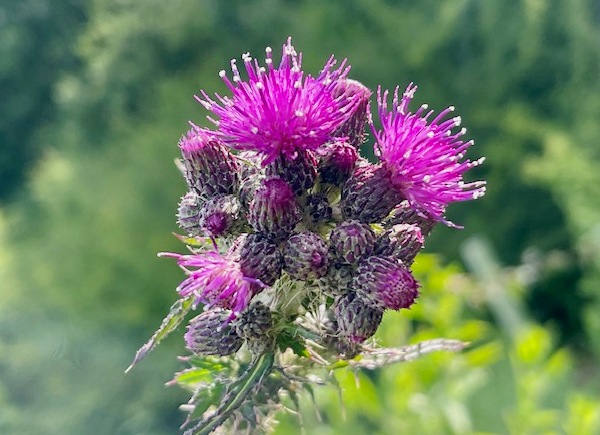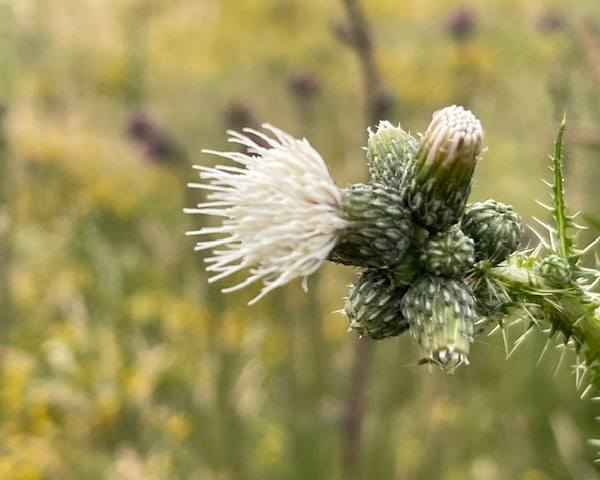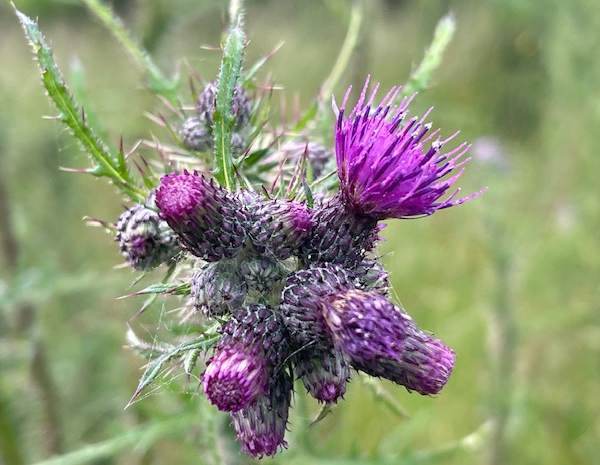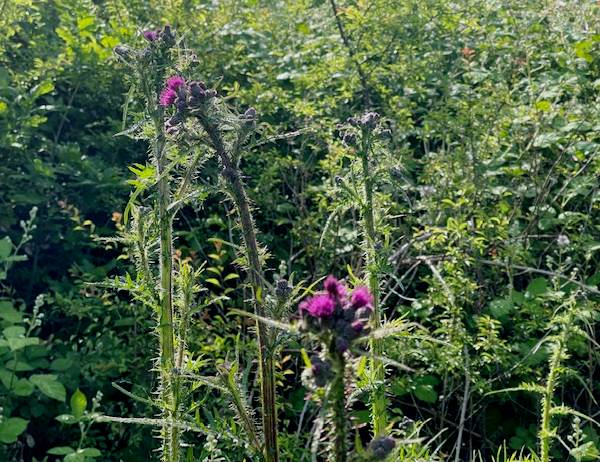Trees Birds Mammals Fish Amphibians Reptiles
Wild Algarve
Bookshop
Cirsium palustre - Marsh Thistle
Phylum: Magnoliophyta - Class: Equisetopsida - Order: Asterales - Family: Asteraceae

A fairly common biennial or perennial herb found throughout most of Britain and Ireland, when in seed Marsh Thistle is a valuable source of food for many small birds.
Description
Marsh Thistle grows to a typical height of 1.2 metres with the occasional specimen reaching a height of nearly two metres. The stems are covered in spiny wings, and the shiny unstalked alternate leaves are narrowly lanceolate and pinnately lobed; they are spiny and sparsely covered in soft hairs on their upper surfaces.
Most Marsh Thistles have purple (occasionally white) flowers, typically 10 - 12 mm across and borne in closely packed clusters at the tips of the stems. The flower bracts are green with a white central line and usually tinged with purple (except with the white-flowered form); they are backed with small weak spines.
In late summer and autumn the seeds, which have feathery white papuses ('parachites' as some people call them) are dispersed by the wind.

Above: White form of Cirsium palustre at Curbridge Nature Reserve
Plants are often dioecious (bearing either male or female flowers), and pollination is mainly by insects; however, Marsh Thistle also spreads vegetatively via its root system to produce some very large clonal colonies.

Distribution
Common throughout Britain and Ireland, this species is native to Europe and parts of western Asia and it is an introduced alien invasive weed in many other parts of the world including North America and New Zealand.

Habitat
Marsh Thistle favours wet grassland, wet woodland edges, ditches, bogs, fens and marshes.
Blooming Times
In Britain and Ireland Marsh Thistle flowers first appear in late June and continue into September.
Similar species
Creeping Thistle Cirsium arvense favours drier habitats and is easily distinguished by its smooth stems.
Uses
A wide range of insects, including bees and butterflies, seem to be fond of the flowers of Marsh Thistle. Small birds, and in particular Goldfinches, feed on the seeds of this plant.
Etymology
Cirsium, the genus name, comes from Greek and means a kind of thistle. The specific epithet palustre comes from Latin and means 'of marshes'.
Acknowledgements
This page includes pictures kindly contributed by Ashley Warner.
Sue Parker's latest ebook is a revised and enlarged edition of Wild Orchids in The Burren. Full details here...
Buy it for just £5.95 on Amazon...
Sue Parker's new ebook is a comprehensive and fully revised edition of her acclaimed field guide to the Wild Orchids of Wales. Full details here...
Buy it for just £5.95 on Amazon...
Please Help Us: If you have found this information interesting and useful, please consider helping to keep First Nature online by making a small donation towards the web hosting and internet costs.
Any donations over and above the essential running costs will help support the conservation work of Plantlife, the Rivers Trust and charitable botanic gardens - as do author royalties and publisher proceeds from books by Pat and Sue.